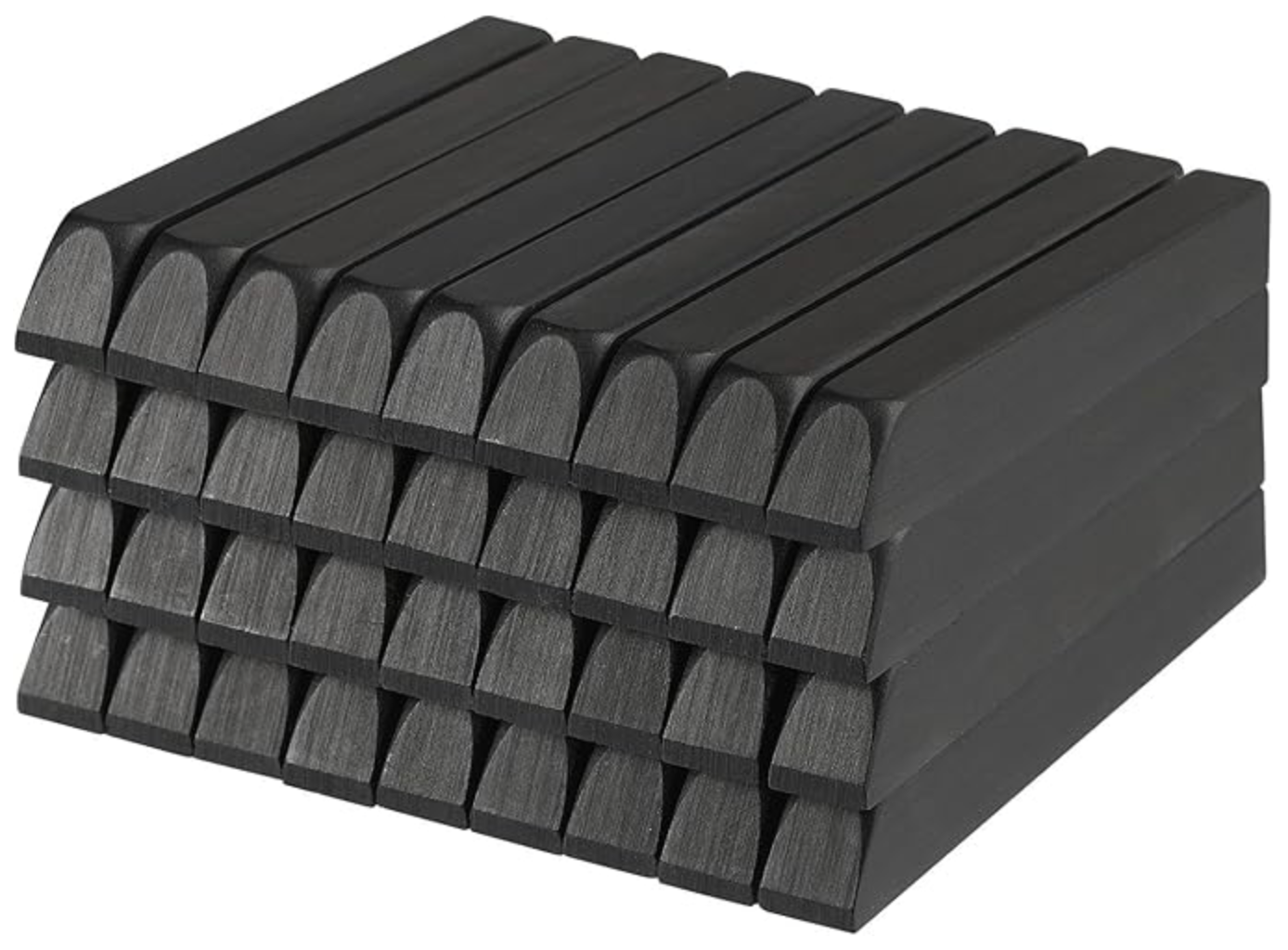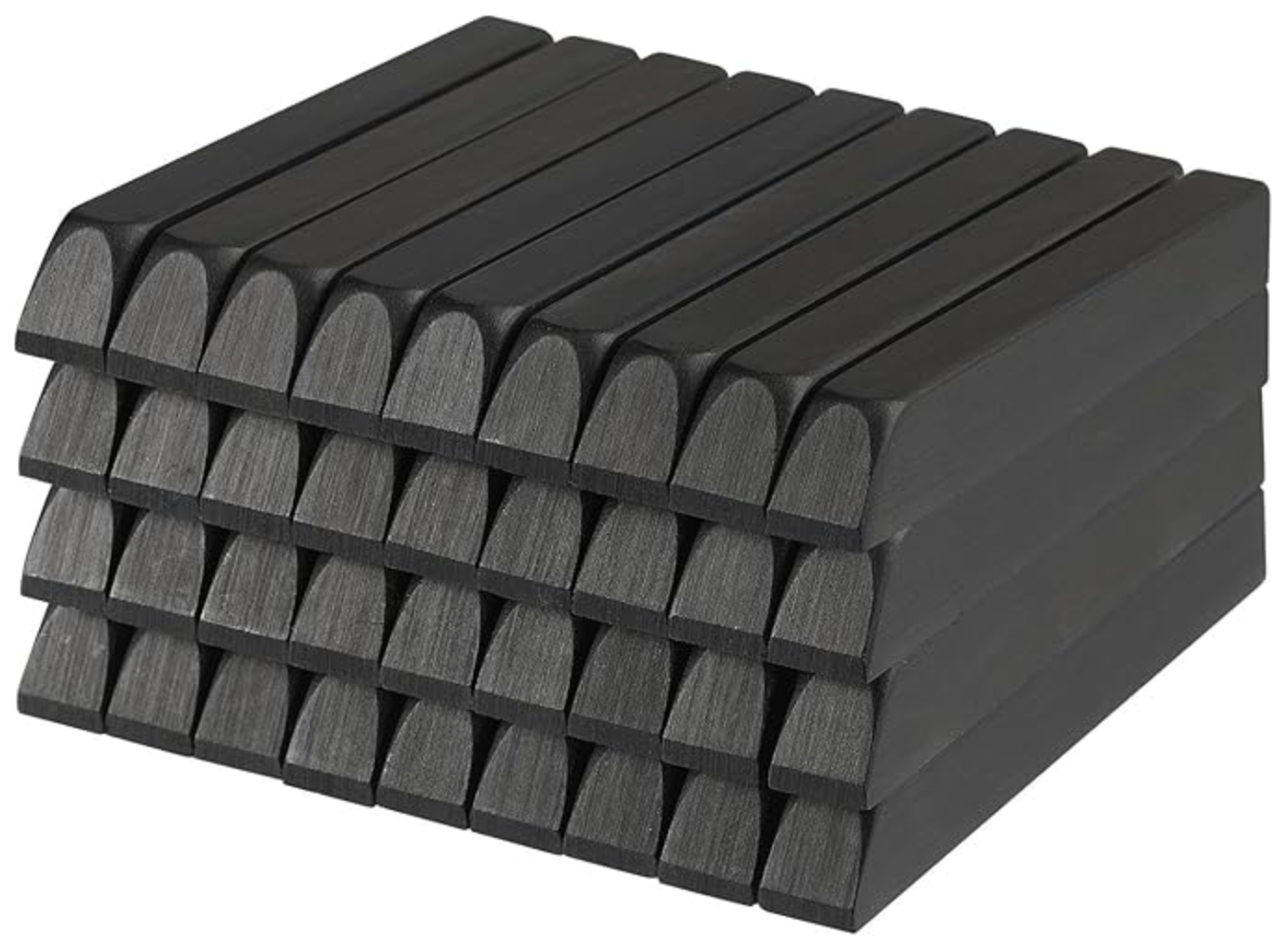
Collapsible content
Features

Handmade at our workshop in Philadelphia, the Vidal was designed from the ground up to be a digital piano controller that feels as satisfying to play as a concert grand piano.
Over three years of development, we made dozens of iterations of our action, discovering and distilling the aspects of grand piano design that make these instruments so expressive and controllable. In the end, we discovered that the feel of playing a grand piano came down to two broad things: subtle design decisions like materials and precise action geometry that work to create a whole greater than the sum of its parts, and the fundamental physics drive the responsiveness of the action.
The Vidal is the first digital piano controller to get these things right.
- 20.5” (52.7 cm) key length
- 10” (25.4 cm) pivot length
- 253 g - 293 g of steel weights per key for an authentic inertial response
- Quartersawn hard maple key buttons for increased key rigidity
- .400” (10.15mm) keydip on white keys, .380” (9.65mm) keydip on sharps
- Minimal bounce on key return for rapid key repetition
- Authentic piano felts under the keys for a realistic keystroke feel
The long keys on the Vidal allow a complete range of hand position and hand rotation possibilities, unlocking the entire spectrum of high-level piano technique. Along with key length, the other most important aspect of action design is inertia. With low-inertia actions like those on uprights and small digital keyboards, a pianist has to push all the way through the keystroke with consistent speed in order to achieve the intended dynamic. This requires a great deal of extra effort to control and limits a player’s technique.

On the Vidal, just as on grand pianos, you only have to strike the key with the intended dynamic at a single moment, and the inertia in the action transmits that intention through the full keystroke. Keys with the correct level of inertia also allow you to play in response to the kinetic energy of the instrument itself, as opposed to the floaty technique forced by uprights and compact digital actions. On the Vidal, steel weights in the front and back of each keys create the same inertial response as felt on concert grand pianos, creating a fluid, effortless connection between player and instrument.

In our design process, we started with the premise that every aspect of the instrument would be made with real materials. We chose the highest grade of birch plywood for the keybed panel, quartersawn spruce beams to support the weight of the keys and hold the keybed rigid, and flatsawn spruce keys, the same as are found on high-end pianos.
- White spruce keys
- Black walnut case
- Quartersawn hard maple damper rail
- Red key bushing cloth
- Green woven backrail felt
- White keydip felts
- Nickel-plated key pins
- Brushed aluminum IO panel
For the keys, we source Canadian white spruce from a specialty supplier in Montreal, who sustainably harvest this wood specifically for use in pianos. This wood is extraordinary to work with. It’s light, perfectly straight, and has an astonishingly high strength-to-weight ratio perfect for use in piano keys.
For our action felts, we import red bushing cloth from a wool mill in the UK whose operations stretch back over a century, and white keydip felts from a German felt manufacturer who supplies top piano makers in Europe. We prototyped every available combination of cloth thickness and density to find materials that gave exactly the right feel.
For our white keytops, we use a hygroscopic acrylic that subtly wicks moisture from a player’s fingers, creating a slight tackiness to the keys that mimics the tactile properties of traditional ivory. For the black keytops, we used a textured, molded acrylic, and offer the option to upgrade to real ebony wood.
The exterior case of the Vidal is made from American black walnut sourced from local Pennsylvania forests. We select only cuts of wood that meet our exacting standards for color and grain patterns, and we dye the wood ourselves before applying a thin lacquer clearcoat.
Our keybed builds on the fundamental techniques of action design that acoustic piano builders have been using for two centuries. Chrome-plated steel pins align the keys and create a low-friction contact point that will last for decades. Quartersawn spruce beams reinforced with steel plates support the full weight of the keys, and are completely resistant to any changes in humidity, meaning the Vidal requires virtually no regulation over time.
Essential to the responsiveness of a digital instrument are its velocity sensors. As with everything on the Vidal, we designed our own sensors and electronics from scratch. Using a STM32G0B0 microcontroller, the Vidal scans the keyboard 10,000 times per second, capturing hi-resolution velocity data that’s encoded through standard MIDI signals.
Our sensors use a traditional contact strip design, where a precision-molded contact strip with two separate conductive pads press on the sensors on our PCBs in sequence, and the timing differential between these two presses is used to calculate note velocity. We opted to use this kind of sensor design due to its reliability and simplicity; this same contact strip design is used on nearly all digital pianos on the market today.
The Vidal sends hi-res MIDI data for both note-on and note-off events, and supports continuous pedaling via compatibility with single-TRS triple pedals.
Today more than ever, there’s a wealth of choices for piano software. Whether utilizing traditional sampling methods or employing hyper-realistic piano synthesis, the sound generation aspect of digital pianos is a solved problem that has been done well many times over. That’s why we chose to make the Vidal a piano controller. It has no built-in sounds, and is designed to be used with a laptop or desktop computer (or a phone or tablet) to create the whole piano experience.
As a small team, we focused all our energy on making the best physical instrument possible, giving players the freedom to choose their own sound source to create the instrument they’ve always wanted to play.
To create a completely new kind of instrument like the Vidal, we had to become our own manufacturer. For every single keyboard we make today, we also make nearly every individual part ourselves, including our keys and keybeds.
Crafted in the same tradition as acoustic instruments, we use traditional woodworking techniques in conjunction with modern CNC manufacturing to create acoustic instruments with an extraordinary degree of precision.


After we manufacture parts on the CNC machine, when then spend days assembling, regulating, and finishing each instrument. Unlike mass-manufactured digital pianos, each Vidal is built and then meticulously regulated by hand, just as with traditional acoustic pianos. For every single key, we adjust key height, keydip distance, the distance of the sensors from the keys, the timing of the sensors in the keydip sequence, the engagement and timing of our dampening felt, and more. Each key also the undergoes touchweight regulation, where we add counterweights to the fronts and backs of the keys to create a uniform touchweight from key to key. Our touchweight is graded, just as on a grand piano, with the keys tapering from 51g in the bass to 47g in the treble.

For the case, after gluing the parts together in interlocking finger joints, we sand every surface before dyeing the wood to give it a warm, vibrant hue that brings out the natural beauty of the black walnut grain. Once the dye has dried, we apply a thin clearcoat of lacquer to help protect the instrument while preserving the figure and color of the grain underneath.


| Power | USB-C |
| MIDI | 5-Pin DIN MIDI OUT, USB-C |
| Sustain Pedal | 1/4” input |
| Triple Pedal | 1/4” TRS jack (supports single-TRS triple pedals only) |
All ports are mounted to an aluminum panel for touring-worthy durability.
The Vidal is compatible with single-TRS triple pedals. These triple pedals use a single cable to transmit MIDI values for three separate pedal inputs, and they plug into the TRPL 1/4” jack.
Technical Specs
| Weight | 110 lbs (40.8 kg) |
| Length | 50.25” (127.6 cm) |
| Depth | 22.5” (57 cm) |
| Height | 5” (12.7 cm) |
| Key Pivot Length | 10” (25.4 cm) |
| Keydip | .400” (10 mm) white keys .380” (9.9 mm) sharps |
| Touchweight | Graded from 51g in the bass to 47g in the treble, +/- 1g |
| Inertial Key Weights | 253 g per white key 293 g per sharp |
| Power | USB-C, Optional DC Adapter |
| MIDI | 5-Pin DIN MIDI OUT, USB-C |
| Velocity Resolution | 16,000+ steps via hi-res MIDI 127 steps via standard MIDI |
| Scan Rate | 10 kHz |
| Sustain Pedal | 1/4” TRS jack |
| Triple Pedal | 1/4” TRS jack (supports single-TRS triple pedals only) |
Order Terms
This is a MIDI controller / no built-in sounds
Our keyboard is a MIDI controller and does not generate any sound on its own, nor does it have any built-in speakers. This means that the keyboard must be connected to a computer, synthesizer, or other sound-generating device in order to create sound. It also must be used either with headphones or with external speakers.
Order Modifications
Once your order is submitted, we immediately purchase parts and materials and allocate production time to make your instrument. Orders have a 24-hour window for any modifications. After that, orders may not be cancelled or modified.
Fulfillment Window
We make each order as they're received, and we do our best to manufacture and ship keyboards as quickly as we can. If your estimated fulfillment window changes after placing your order, we'll reach out as soon as possible to give you an updated timeframe.
Features May Change
Our core features of a fully-weighted action, real wood keys, and real wood case will stay the same, but small details of the design may change as we further refine our product.
Wood Grain Variation
Since we use real hardwoods for the exterior case of the Vidal, there will be small variations in the texture of the wood from keyboard to keyboard. We carefully select wood stock with only the most appealing grain patterns, and we don't accept refunds or exchanges based on variations in wood grain.
Return Policy
If for any reason your keyboard doesn't 100% meet your expectations, you can return it within 30 days after delivery for a full refund. Returned keyboards must be in new condition, and the cost of return shipping will be deducted from your refund. Keyboards which show visible wear or damage may be subject to a 10% restocking fee.
Warranty
Simple Terms
Vidal warrants the Piano Controller to be free from defects in workmanship for a period of three (3) years after delivery. Should any problems arise, you can take the keyboard to an authorized service center to have it repaired free of charge.
Coverage
Manufacturer defects, electronics failures, mechanical issues not caused by normal use.
Exclusions
Aesthetic imperfections, problems caused by normal use.
Transferability
This warranty is valid only for the original purchaser of the instrument and may not be transfered.
Parts Availability
We guarantee that replacement parts will be available for a minimum of 10 years after the date of purchase.
Customer Obligations
The customer is responsible for transporting the keyboard to and from an authroized service center. Vidal is not responsible for lost wages due to manufacturer defects. Should a customer take an instrument to an authorized service center and no issue be found, the customer is responsible for all costs incurred.
The Team

Vidal is Tom Rudnitsky, a classically trained pianist and piano rebuilder, and George Hilliard, a software and embedded systems engineer.

